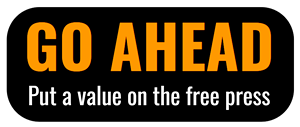We checked in with Priggee to find out more about his work:
360: What makes editorial cartoons so effective?
Priggee: We're producing visuals. The human brain recognizes visuals before words. You're going to look at a picture before a paragraph, you're going to understand a picture before you understand a paragraph - that's why they are so effective. The visual engages a reader viscerally, right in the gut.
360: How does the exaggerated nature of editorial cartoons play into that?
Priggee: You've got 3 to 5 seconds to get your message across. We exaggerate to get the message forceful and powerful so the message is understood in no more than 5 seconds.
360: What's the difference then between what you're doing - editorial cartooning - and comic strips?
Priggee: The comic strips, their main objective is the morning chuckle. The editorial cartoon's main objective is to make you think. A lot of people like to accuse me with, "That cartoon's not funny." Well, that's not what it's about. It's the letters - in reaction to the cartoon - that are the entertainment.
360: Speaking of letters, you've gotten some hate mail - even death threats - is that right?
Priggee: Sure, we all do. I used to get death threats more when I lived in Spokane. Spokane was a great place to draw cartoons because there was a very passionate left and a very passionate right. I started in 1987 in Spokane - the Aryan Nations and a lot of like-minded people were there at the time. I draw cartoons to provoke debate. Some people didn't want debate, they wanted to take me out. So we had a fun time there in Spokane.
360: How have newspapers and political cartooning changed over time?
Priggee: There was a time when everyone had a cartoonist. Only a few do now. We're at the end of the Guttenburg era. We had a good run, it was fun while it lasted, which made for competition with newspapers. I grew up in Chicago, and there were five newspapers there, all sitting in newsstands next to each other. The editorial cartoon was right there on the front page, and the reader would grab the paper with the cartoon that caught their attention. But the competition is no longer there, print-wise; they're competing with the digital world.
360: One of the things you emphasize is the value of editorial cartoons with local content. Why?
Priggee: Look at it this way: Newspapers readers are drowning in national-issue cartoons. You can go on the Internet and see nearly every editorial cartoon on the face of the planet. When a newspaper publishes a national cartoon, most likely your reader has already seen it. They're drowning in national, but starving in local. I have a Washington state political cartoon page because I love doing state cartoons, and also because no one else is doing them. I'm bucking the trend a bit. I'm trying to convince editors that, "Hey, I've got content that readers can't get from any other source."
360: How do you come up with your content?
Priggee: (Laughs) I've got the best writers. Take Bill Clinton - when he said, "I did not have sexual relations with that woman." What? I can't make this stuff up. I've got the best writers in the world. My characters are already written. I've got all these characters running around, the hard part is not where you get the idea, it's trying to find enough time in the day to draw the cartoon.
360: How long does it take to draw a cartoon?
Priggee: The drawing is the easy part. That's not the work, the work is following the news, reading, reading enough to be looked upon as an expert in these subjects. You're following politics, science, sports, culture and then forming an opinion on all of these subjects. The drawing will take anywhere from 30 minutes to six hours. So the average is three to four hours, but that's not the work.
360: And how do you find your idea? The thing you're going to communicate?
Priggee: As I'm listening to news on TV, reading a website over there, a newspaper over here, I have an idea pad and I'm doodling. That doodling helps me focus. As I'm doodling away, I'm continually asking, "What's going on here? What do I want to say about this subject?"
360: When did you know you wanted to be an editorial cartoonist?
Priggee: When I was 10 years old, I saw a cartoon when JFK was assassinated. The cartoon was drawn by Bill Mauldin and took up the entire back page of the Chicago Sun Times. It showed the Lincoln memorial statue crying. There were no labels, captions, balloons. At 10 years old, I didn't have to know what was going on politically, but I understood it. Ever since that time, I sensed that's where I was going.
If you go:
What: Milt Priggee: The Past, Present and Future of Editorial Cartooning
When and Where: Thursday, Sept. 18 at noon at the United Methodist Church at 109 S. Mill St. in Colfax and at 5:30 p.m. in the Hecht Meeting room at Neill Public Library at 210 Grand Ave. in Pullman.
Cost: Free. Guests at the noon talk in Colfax are invited to bring a lunch or just come and listen.



















